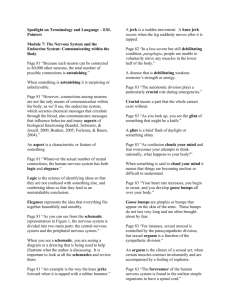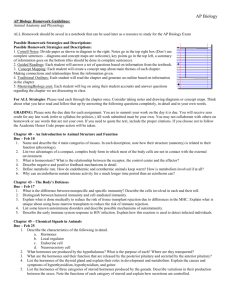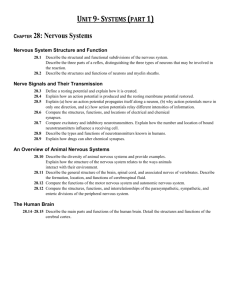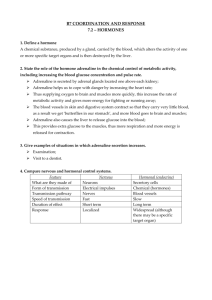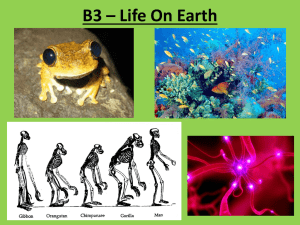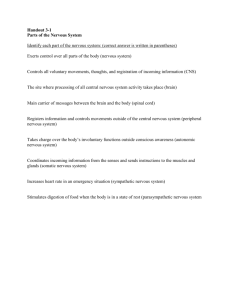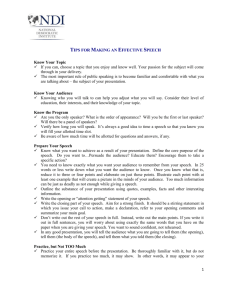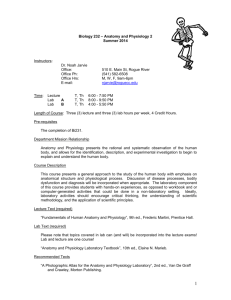E9A - The similarities and differences between nervous and hormonal
advertisement
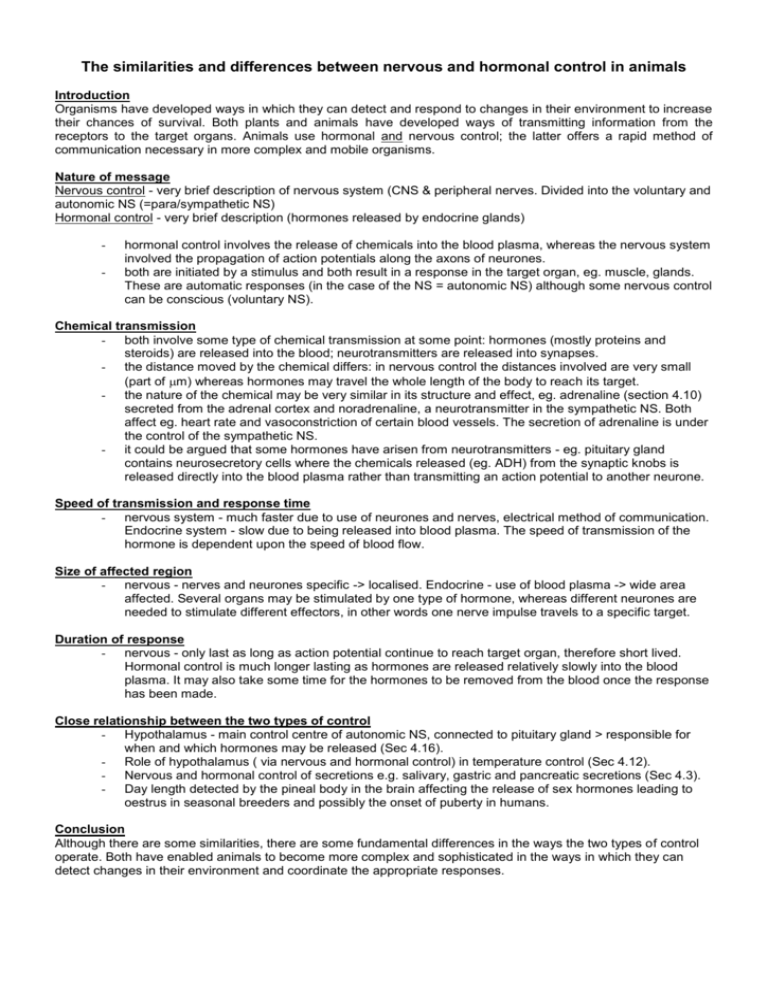
The similarities and differences between nervous and hormonal control in animals Introduction Organisms have developed ways in which they can detect and respond to changes in their environment to increase their chances of survival. Both plants and animals have developed ways of transmitting information from the receptors to the target organs. Animals use hormonal and nervous control; the latter offers a rapid method of communication necessary in more complex and mobile organisms. Nature of message Nervous control - very brief description of nervous system (CNS & peripheral nerves. Divided into the voluntary and autonomic NS (=para/sympathetic NS) Hormonal control - very brief description (hormones released by endocrine glands) - hormonal control involves the release of chemicals into the blood plasma, whereas the nervous system involved the propagation of action potentials along the axons of neurones. both are initiated by a stimulus and both result in a response in the target organ, eg. muscle, glands. These are automatic responses (in the case of the NS = autonomic NS) although some nervous control can be conscious (voluntary NS). Chemical transmission - both involve some type of chemical transmission at some point: hormones (mostly proteins and steroids) are released into the blood; neurotransmitters are released into synapses. - the distance moved by the chemical differs: in nervous control the distances involved are very small (part of m) whereas hormones may travel the whole length of the body to reach its target. - the nature of the chemical may be very similar in its structure and effect, eg. adrenaline (section 4.10) secreted from the adrenal cortex and noradrenaline, a neurotransmitter in the sympathetic NS. Both affect eg. heart rate and vasoconstriction of certain blood vessels. The secretion of adrenaline is under the control of the sympathetic NS. - it could be argued that some hormones have arisen from neurotransmitters - eg. pituitary gland contains neurosecretory cells where the chemicals released (eg. ADH) from the synaptic knobs is released directly into the blood plasma rather than transmitting an action potential to another neurone. Speed of transmission and response time - nervous system - much faster due to use of neurones and nerves, electrical method of communication. Endocrine system - slow due to being released into blood plasma. The speed of transmission of the hormone is dependent upon the speed of blood flow. Size of affected region - nervous - nerves and neurones specific -> localised. Endocrine - use of blood plasma -> wide area affected. Several organs may be stimulated by one type of hormone, whereas different neurones are needed to stimulate different effectors, in other words one nerve impulse travels to a specific target. Duration of response - nervous - only last as long as action potential continue to reach target organ, therefore short lived. Hormonal control is much longer lasting as hormones are released relatively slowly into the blood plasma. It may also take some time for the hormones to be removed from the blood once the response has been made. Close relationship between the two types of control - Hypothalamus - main control centre of autonomic NS, connected to pituitary gland > responsible for when and which hormones may be released (Sec 4.16). - Role of hypothalamus ( via nervous and hormonal control) in temperature control (Sec 4.12). - Nervous and hormonal control of secretions e.g. salivary, gastric and pancreatic secretions (Sec 4.3). - Day length detected by the pineal body in the brain affecting the release of sex hormones leading to oestrus in seasonal breeders and possibly the onset of puberty in humans. Conclusion Although there are some similarities, there are some fundamental differences in the ways the two types of control operate. Both have enabled animals to become more complex and sophisticated in the ways in which they can detect changes in their environment and coordinate the appropriate responses.

